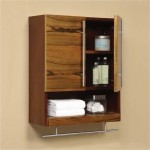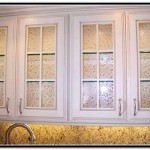How to Stain Cabinets Darker Without Sanding: A Quick Guide
Staining your cabinets darker without sanding is a convenient and cost-effective way to refresh the look of your kitchen or bathroom. Whether you're aiming for a dramatic transformation or a subtle enhancement, this easy-to-follow guide will help you achieve professional-looking results. ### Preparation 1.Clean the Cabinets:
Remove any dust, dirt, or debris from the cabinet surfaces using a damp cloth and mild detergent. Allow the cabinets to dry completely. 2.Protect Adjacent Surfaces:
Cover countertops, floors, and walls with plastic sheeting or drop cloths to prevent staining. Use painter's tape to secure the edges. 3.Test the Stain:
Apply a small amount of the stain to an inconspicuous area of the cabinet to test the color and ensure compatibility with the existing finish. ### Staining Process 1.Use a Gel Stain:
Gel stains are thicker and less runny than traditional liquid stains, making them ideal for vertical surfaces. Use a soft cloth or foam brush to apply the gel stain in thin, even strokes. 2.Work in Sections:
Divide the cabinet into smaller sections and stain them one at a time to prevent the stain from drying prematurely. Work from top to bottom and from the far end of the cabinet to the front. 3.Apply Evenly:
Pay attention to the grain of the wood and apply the stain along the direction of the grain. Use a light touch and blend the edges of each section to create a smooth, uniform appearance. 4.Let the Stain Dry:
Allow the gel stain to dry according to the manufacturer's instructions. This typically takes 4-8 hours, depending on the humidity and temperature. 5.Wipe Off Excess:
Once the stain is dry, use a clean cloth to wipe off any excess stain that may have accumulated on the surface. Be gentle to avoid smearing the stain. ### Post-Finishing Touches 1.Apply a Polyurethane Finish:
Protect the stained surface with a polyurethane finish. Use a high-quality polyurethane that is compatible with the stain and intended use (e.g., for kitchen cabinets or bathroom vanities). 2.Sand Lightly:
If desired, you can sand the polyurethane finish lightly with fine-grit sandpaper (e.g., 220-grit) to remove any brush marks or imperfections. 3.Clean and Protect:
Regularly clean the stained cabinets with a damp cloth and mild detergent to maintain their appearance. Apply additional polyurethane coats as needed to protect the finish and extend its lifespan. ### Tips - Use proper ventilation while staining and finishing. - Wear gloves and a mask to protect your hands and respiratory system. - Practice staining on a scrap piece of wood before working on your cabinets. - Allow ample drying time between each step of the process. - Use a fine-tip brush or sponge applicator for intricate details or hard-to-reach areas. - Consider adding a glazing step to enhance the depth and richness of the stain.
Staining Your Wood Cabinets Darker Young House Love

Gel Stain Kitchen Cabinets Without Sanding Fast Easy Diy

Darken Cabinets Without Stripping The Existing Finish Pneumatic Addict

Staining Your Wood Cabinets Darker Young House Love

How To Refinish Wood Cabinets The Easy Way Love Remodeled

Gel Stain Kitchen Cabinets Without Sanding Fast Easy Diy

Diy Gel Stain Cabinets No Heavy Sanding Or Stripping Maison De Pax

Pickled Oak Bathroom Vanity Before And After Gel Stain Staining Cabinets Kitchen Makeover Wood

Diy Staining Oak Cabinets Eclectic Spark

Painting And Staining Cabinets For Girls Bath Makeover The Palette Muse
Related Posts








